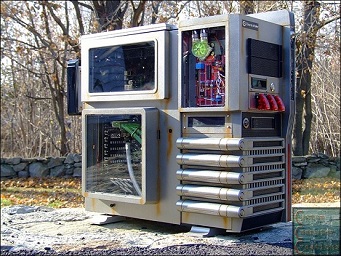Displaying items by tag: Readers' Blogs
Computer modding, a discovery of one of the world's greatest subcultures, part 1: "Cultural Diversity"
 Editor's Note: This article was written by one of our own forum members PM_DMNKLR and was voted on by the community as the best written of the entries for November 2011. The article is reproduced here in the same format as it was originally published in our Readers' Blog Forum. Each month we will host a contest for our Forum members to write an article or a review with the chance of being published on our site (as well as win some cool stuff). So now DecryptedTech is happy to bring you November's Winning article;
Editor's Note: This article was written by one of our own forum members PM_DMNKLR and was voted on by the community as the best written of the entries for November 2011. The article is reproduced here in the same format as it was originally published in our Readers' Blog Forum. Each month we will host a contest for our Forum members to write an article or a review with the chance of being published on our site (as well as win some cool stuff). So now DecryptedTech is happy to bring you November's Winning article;
Computer modding, a discovery of one of the world's greatest subcultures, part 1: "Cultural Diversity"
The PC modding scene is quite a vast one in present day. At it's humble beginnings, quite a few moons ago, it was merely the idea of painting a case to a more peculiar color, installing a light inside of the case somewhere, adding stickers or other similar-style decals, etc., but rarely was anything so much more. Today, however, we have an industry that thrives on not only customizing our own computer periphery, but also custom creation of many components and accessories as well. Present-day computer modifications range anywhere from your basic, average LED case fan add-on, to full-blown scratch-built cases, made out of wood, plastic, steel, aluminum, fiberglass, resin, you name it and someone's making it. Even cooling has gone to the extremes in today's society, where in times of yesteryear, whilst it maintained a basis of adding an additional cooling fan or two to a much-needed area in the case or on a specific component, ie: adding an additional 1 or 2 fans to the CPU's heatsink for example, today's pc's, or "rigs" as we commonly refer to them now, have upwards of extreme liquid or even a TEC (Thermo-Electric-Cooler), also called a Peltier cooler, which transfers electricity throughout it's internal contacts, to create one side as extremely hot, by means of temperature transfer, enabling the surface of which makes contact with the CPU to remain extremely cold, thus also enabling the user to not only have a very, very low CPU temperature, but also enabling them to commit to serious overclocks, while still maintaining such deeply low temperatures.
